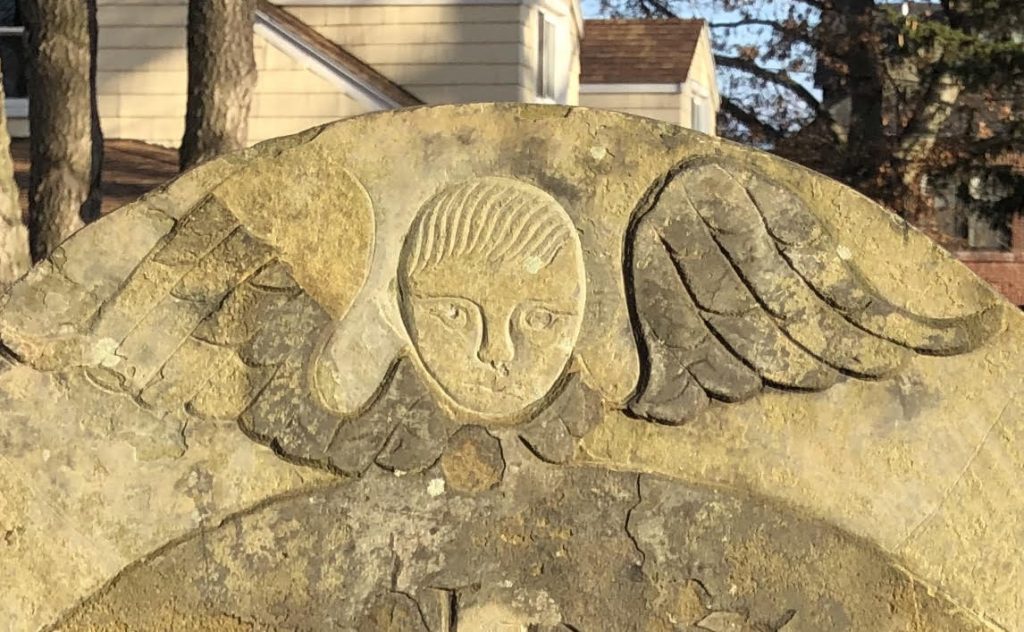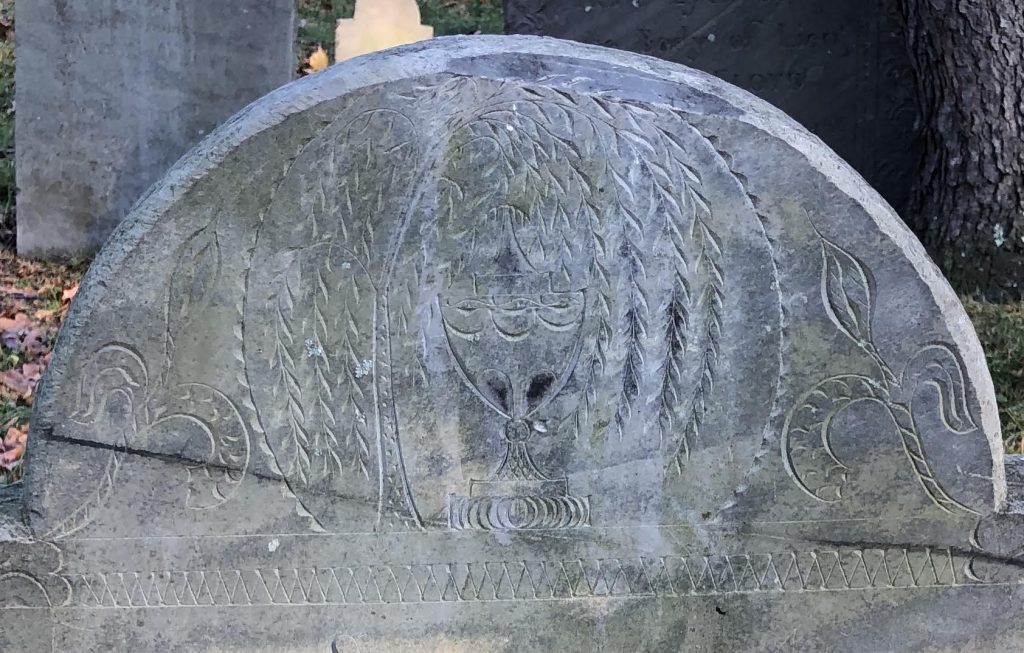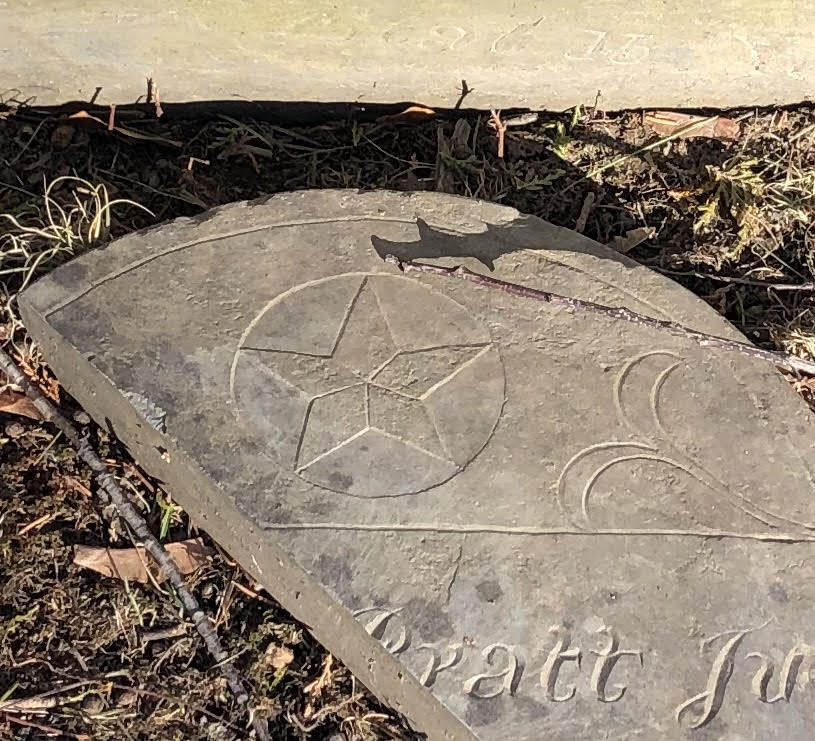The sources of information about Caleb Lamson II are the books From Slate to Marble: Gravestone Carving Traditions in Eastern Massachusetts Volumes I and II by James Blachowicz. Both volumes are available at http://graverpress.com and are absolutely essential for anyone interested in the history of New England’s cemeteries.
Caleb Lamson II was a fourth generation member of the Lamson family, a dynasty in New England gravestone carving. The patriarch, Joseph Lamson, started carving in the late 1670s, and his descendants carried on the family trade into the 1820s. Joseph popularized many of the common gravestone symbols of his time, and his children and grandchildren adapted to the changing tastes of their times. Caleb II, born in 1760, began his apprenticeship with his father and uncle when he was 14 or 15 years old and carved almost up to his death in 1824.
Blachowicz credits Caleb Lamson II with carving the tympanums (the top part of the stone which features the main image) of over 400 gravestones, and providing the inscriptions for more than 300 additional stones by other carvers. He attributes the following stones in RMBG to Lamson: Sally Cheever (1790), Sarah Payson (1791), Mary Butman (1792), Samuel Pratt, Jr. (1797), Abigail Eustis (1798), James Tuksbury (1799), Moses Collins (1810), Aaron Floyd (1817), and Nancy and George Floyd (1817).
Lamson worked mostly in winged cherub faces and willows and urns. His winged cherub faces can be recognized by looking for stylistic elements that are sometimes just plain weird. His faces of the 1780s are nearly perfect circles, but their shapes evolved in the 1790s to feature irregular bulges, chins, and occasional hourglass shapes. Hair on his early stones was often flamboyant, sometimes in pointed crests, curls, and widow’s peaks, but it seemed he got bored with hair in the 1790s and resorted to a combed, straight style. His eyes and mouths were roughly carved, and Blachowicz goes as far as to call his noses “ugly” and “unfortunate.”



Lamson’s willows and urns were perhaps more impressive than his faces. His willow trunks were usually narrow and sometimes crooked, and his leaves were narrow slashes. He often put the initials of the deceased on his urns. But two of the examples of his willow and urn in RMBG are a bit more involved than those of some of his peers. The almost identical Floyd stones that he carved feature willows with profusions of branches and leaves. Willow and urn are framed inside a ring, which is flanked by two plants.

An interesting outlier is the stone for Samuel Pratt, Jr. Blachowicz makes no mention of stars in his study of Caleb Lamson II’s work, but the plants, while less detailed, are similar to those on the Floyd stones.

Researched and written by Brendan O’Brien, July 2020. Photographs by same.
